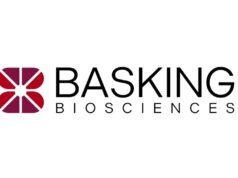Researchers at the Allen Institute for Brain Science have mapped the development of the mouse brain from the embryo to the adult, creating a preliminary genetic key that allows them to pinpoint the age and location of regions of the developing brain. This work lays the foundation for tracking regions of the mouse brain through development, which could have valuable implications for translational work in human brain developmental disorders. The research, profiling the publicly available Allen Developing Mouse Brain Atlas, is published in the journal Neuron.
In order to identify individual brain regions, and their age, researchers frequently turn to using genes that can be found exclusively in that particular region and time point. But truly specific so-called “marker” genes are actually quite rare, explains Michael Hawrylycz, investigator at the Allen Institute for Brain Science. “Rather than relying on single genes, we were able to identify combinations of genes and use those combinations to create a unique code that can be used to place regions of the brain in space-time,” says Hawrylycz.
The research team also captured evidence of how the brain develops from its earliest form of stacked primordial plates to its adult form with the more familiar geographic regions that begin to correspond to specialised functional divisions of the brain.
“We can now place this important organisational transition from plates to regions within developmental time,” says Carol Thompson, lead author and scientific programme manager at the Allen Institute for Brain Science. “We already knew this transition took place, but now we understand the mechanics behind it at a much more detailed, molecular level.”
The Allen Developing Mouse Brain Atlas serves as an expansion of the original Allen Mouse Brain Atlas and identifies where genes are active in the brain over seven different ages, ranging from prenatal to adult. Rather than profiling every gene in the mouse genome, the researchers selected approximately 2,100 genes with particular importance in development, and used those to identify individual brain regions at different time points.
“The Allen Developing Mouse Brain Atlas works like a Rosetta stone for the developing brain,” says Allan Jones, chief executive officer of the Allen Institute for Brain Science. “We can translate how and when genes are expressed into what is happening in the brain developmentally, making this resource a promising tool for better understanding and eventually treating brain developmental disorders and diseases.”
As with all Allen Brain Atlas resources, the data from the Allen Developing Mouse Brain Atlas are publicly available through the Allen Brain Atlas data portal at brain-map.org.











